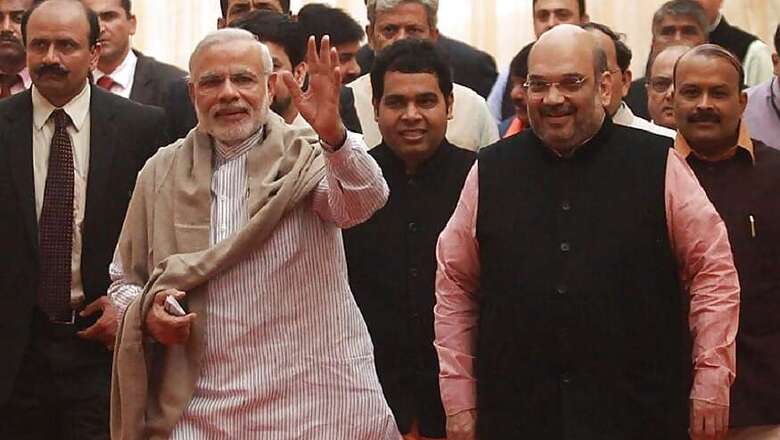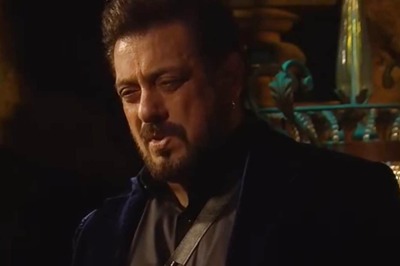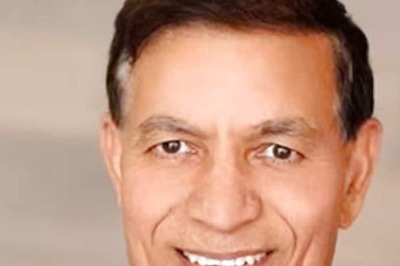
views
Prime Minister Narendra Modi's road to South Block this time must pass through the Southern states. Though he continues to be the favourite, it is no cakewalk for the BJP to win the ensuing Lok Sabha polls without penetrating in the South where both the national parties — the BJP and the Congress — are marginal players.
Therefore, the South is going to be the biggest challenge for the BJP. Many experts feel that it might lose about 40 seats in UP because of the SP–BSP–RLD coalition, another 20 seats in the Hindi heartland and 20 others in the rest of the country.
The party has to make up these 80 seats from elsewhere. It has already peaked in the North, West and also made some impressive debut in the northeast. The gap can be filled up only from the East and the South where there is some space. The five Southern states – Andhra Pradesh, Telangana, Karnataka, Tamil Nadu, Kerala – and Union Territory of Pondicherry together send 130 MPs to the Lok Sabha. Despite the Modi wave in 2014, the BJP won just 20 seats from the region, of which 17 are from Karnataka, two from Andhra Pradesh and one from Tamil Nadu.
That is why the party has carefully strategised to look South for its expansion. The BJP’s nationalist or Hindutva appeals have not influenced the South. Telengana, Andhra Pradesh and Tamil Nadu are bastions of regional parties. These parties hold sway by appealing to local sensibilities, culture and language while the BJP remains a fringe player.
Kerala alternates between the LDF and the UDF. Karnataka is the only state where the party has come within the striking distance of forming the government last year and had also formed it first government in the South in 2007.
The BJP has been unable to make inroads in the South because it is seen as a North Indian party. Secondly, it has no strong local leaders. Thirdly, the BJP has been riding piggy- back on regional players, which has resulted in the party playing a minor role for many years. Fourthly, each Southern state has its own story to tell and the BJP has not been able to come up with a local narrative.
Considering all these, the BJP strategists have chalked out a state- specific strategy. Karnataka is the only success story where the BJP is hoping to build on previous electoral successes. Here, the BJP’s core vote bank is Lingayats, who constitute about 14 per cent.
If it manages to split OBCs and Dalit votes plus STs, with the strong backing of Lingayats and other smaller upper castes the BJP can do well. There are chances of improving or at least holding on to its present tally in the state. In the 2018 Assembly polls, the BJP won in constituencies beyond its traditional strongholds along the coast. However, the pre-poll alliance announced by the Congress and the JD (S) (Janata Dal Secular) could hurt its prospects.
The BJP is more optimistic in Tamil Nadu, where it has secured a pre-poll alliance with the ruling AIADMK, which won 37 of the 39 seats in 2014. Though, there is a leadership vacuum in the state after the death of the AIADMK supremo J Jayalalithaa and the DMK chief M Karunanidhi, the BJP believes that its alliance is stronger this time as compared to 2014 when it led a rainbow coalition and won one seatThe BJP hopes to get two or three seats at least of the five it is contesting. But the DMK coalition might hurt its chances.
In Telengana, the BJP has no allies and no political base. The party is depending on the division of opposition votes and post poll alliance with the TRS, which has done well in the December Assembly polls.
The TRS had a strong base amongst OBCs and its caste arithmetic has been one of backward castes and SCs in a state where over 80 per cent of the population consists of SC, ST, BCs and Minority communities. The TDP has traditionally been a party dominated by the Kammas but their presence in the state is not much. The Congress did not do well in Assembly polls nor did the BJP. At the most the BJP might get one seat if it is lucky.
BJP is no threat to the TDP in Andhra Pradesh because the party has no base there. It won two seats in 2014 because of its alliance with the TDP. The fight is between the Telugu Desam and YSR Congress and the BJP is hoping to have a post poll alliance with the latter.
The Congress too has no alliance partners. Broadly, theCongress and YSR Congress are for Reddys, and TDP is for Kammas and Kapus while the BJP is nowhere. Challenging the Telugu Desam politically over Kapu votes is Jana Sena Party, founded by Pawan Kalyan , who can play the role of a spoiler. The BJP might even draw a blank this time in the state because it has no allies.
Despite competing in a large number of seats the BJP is yet to win a single seat in Kerala. The BJP has formed an alliance with the Bharatiya Dharma Jana Sena, a party that has some support from the backward Ezhava community and some smaller parties. The Sabarimala temple entry has come in handy for the BJP, where the issue has polarized the voters. The RSS is working in full swing for the BJP. The BJP is in fight in just one or two seats and will be lucky if it opens its account.
However, the BJP is confident of getting help in the post poll scenario in case of need, as all options are open to them.
(Kalyani Shankar is a political commentator. Views expressed are personal.)




















Comments
0 comment